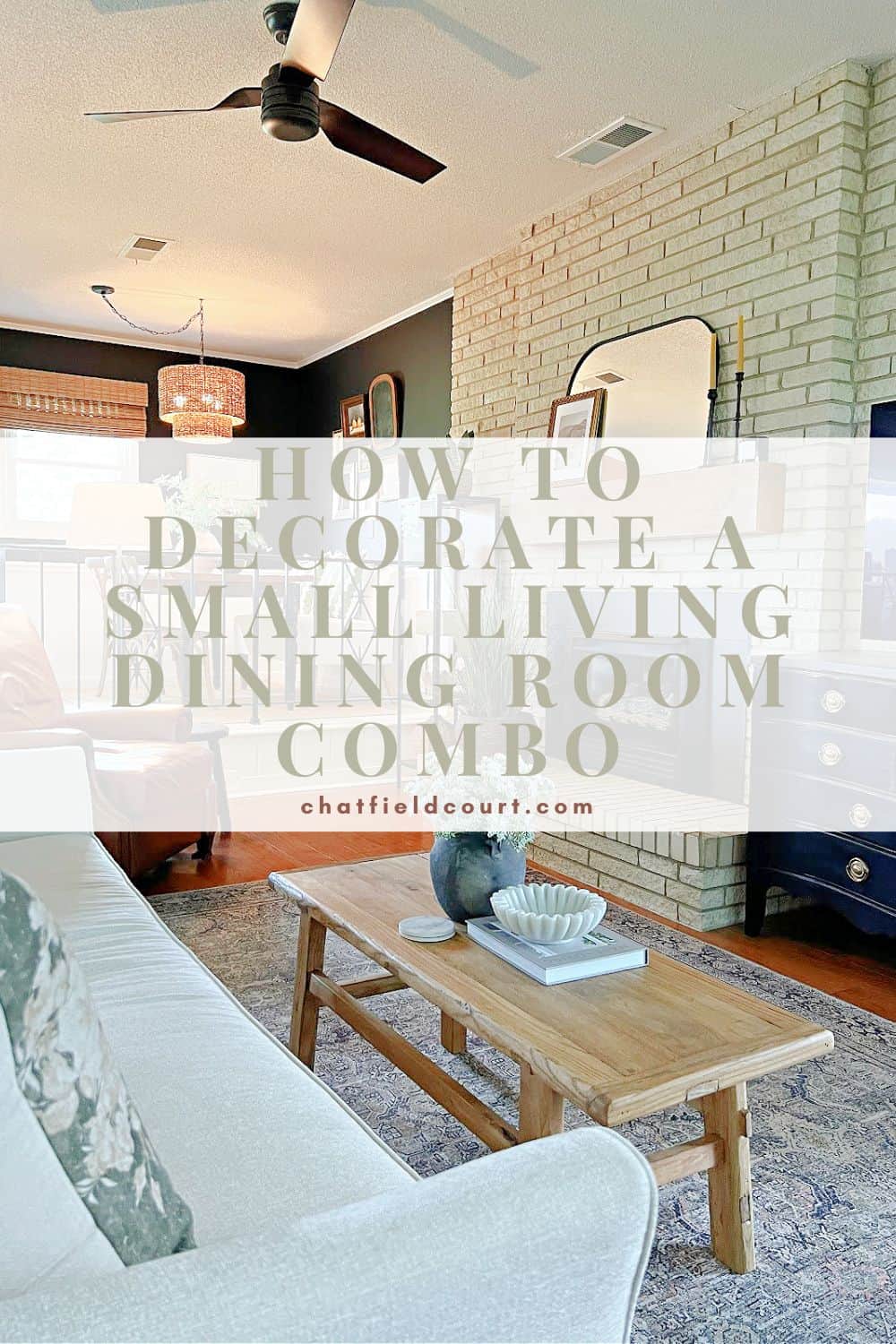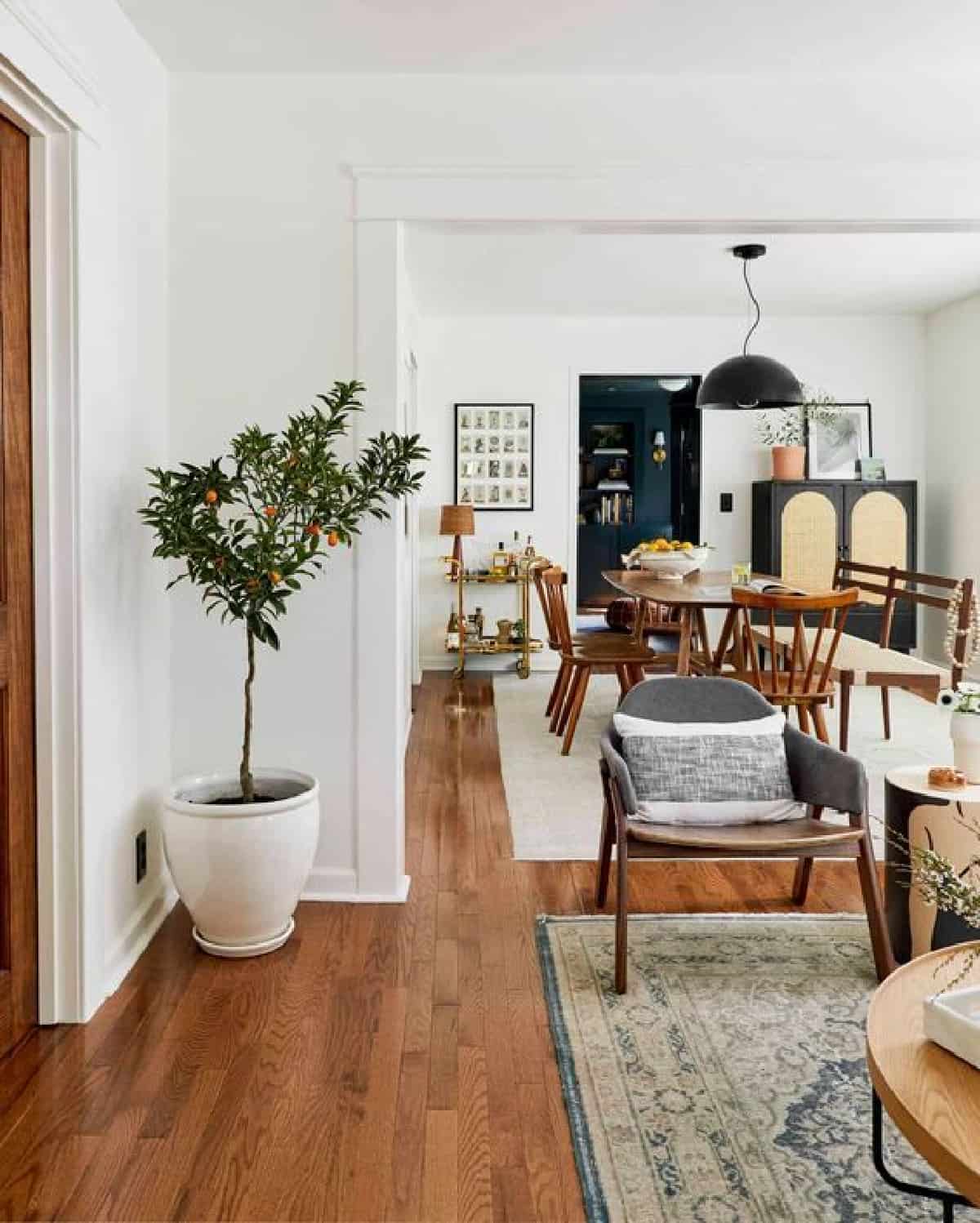How to Decorate a Small Living Dining Room Combo
This post may contain affiliate links, please see our policy for details.
Figuring out how to decorate a space that serves two purposes can be quite the challenge.
But you don’t need grand square footage in order to achieve a stylish and functional area for
both relaxing and entertaining.
In this article we’re going to walk you through some great tips and tricks for decorating a
small living room-dining room combo.
Your space might be limited, but your creativity can thrive.
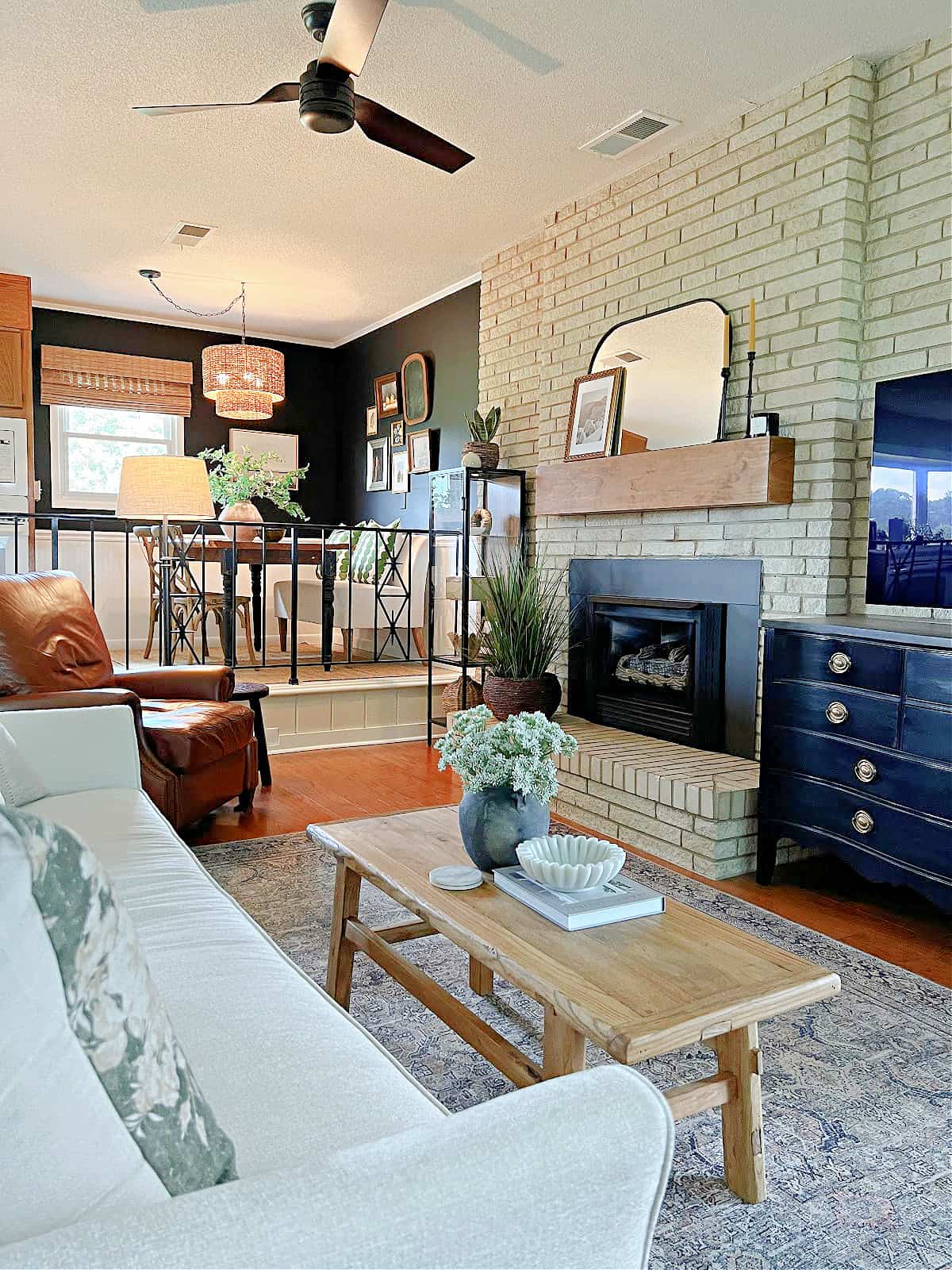
Assessing Your Space
Before diving right in with small living room and dining room ideas, it’s a good idea to take a step
back and analyze what you’re dealing with.
Understanding the limitations and opportunities
of your room combo will guide your decision-making process.
Consider the size and shape of your room. Is it square, rectangular, or perhaps oddly
shaped with angles?
This will have an effect on how your furniture fits, but a quirky room can
offer a perfect chance to create a cozy and inviting atmosphere that’s uniquely you. Check out my post on decorating a long, narrow living room for more info on that.
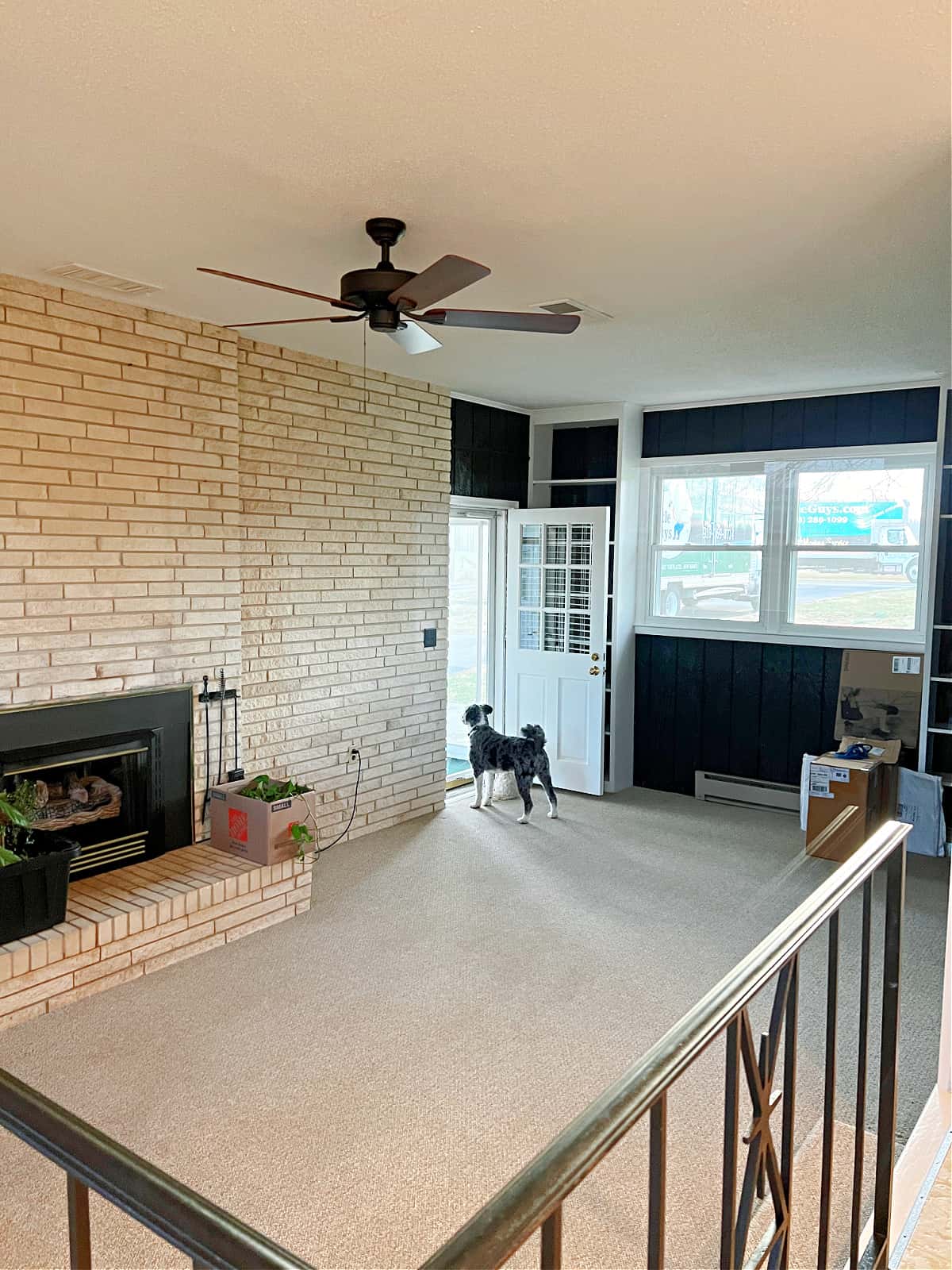
Next, think about the natural light sources in the room. Are there windows that bring in
abundant sunlight?
If so, lucky you! Embrace that natural light and let it be your best friend
when choosing colors and furniture placement.
Creating Zones within One Space
One of the drawbacks of a combined living and dining room is the lack of differentiation
between areas that can affect the harmonious design of your home. But even with a small
open-plan room, you can create distinct sections for your two distinct functions.
Defining Separate Areas
Here are 5 great tips for creating separate areas in a multi-function room:
1. Smart Furniture Placement
Strategic furniture placement plays a crucial role in defining separate areas in an open-plan
living-dining room. Consider using a larger piece like a sofa, to act as a natural divider
between the living and dining sections.
Place your dining table away from the seating area but be sure to allow enough room for
movement around it.
If your space is very small, take advantage of tables that fold into a smaller size but that can extend to accommodate guests. Designs with a drop leaf can take up very little floor area day-to-day and can even be placed against a wall to open up the rest of the room.
2. Rugs as Visual Dividers
Using rugs is an effective way to visually separate different zones within a shared space.
Choose rugs with varying patterns or textures that complement each part’s function while
providing visual boundaries between them.
3. Lighting Differentiation
Lighting can significantly contribute to distinguishing individual spaces within your combined
room setup.
Install ambient lighting fixtures like pendant lights above your dining table to
create an intimate atmosphere conducive to meals. For the living area, incorporate floor
lamps or wall sconces that emit softer lighting ideal for relaxation and socializing.
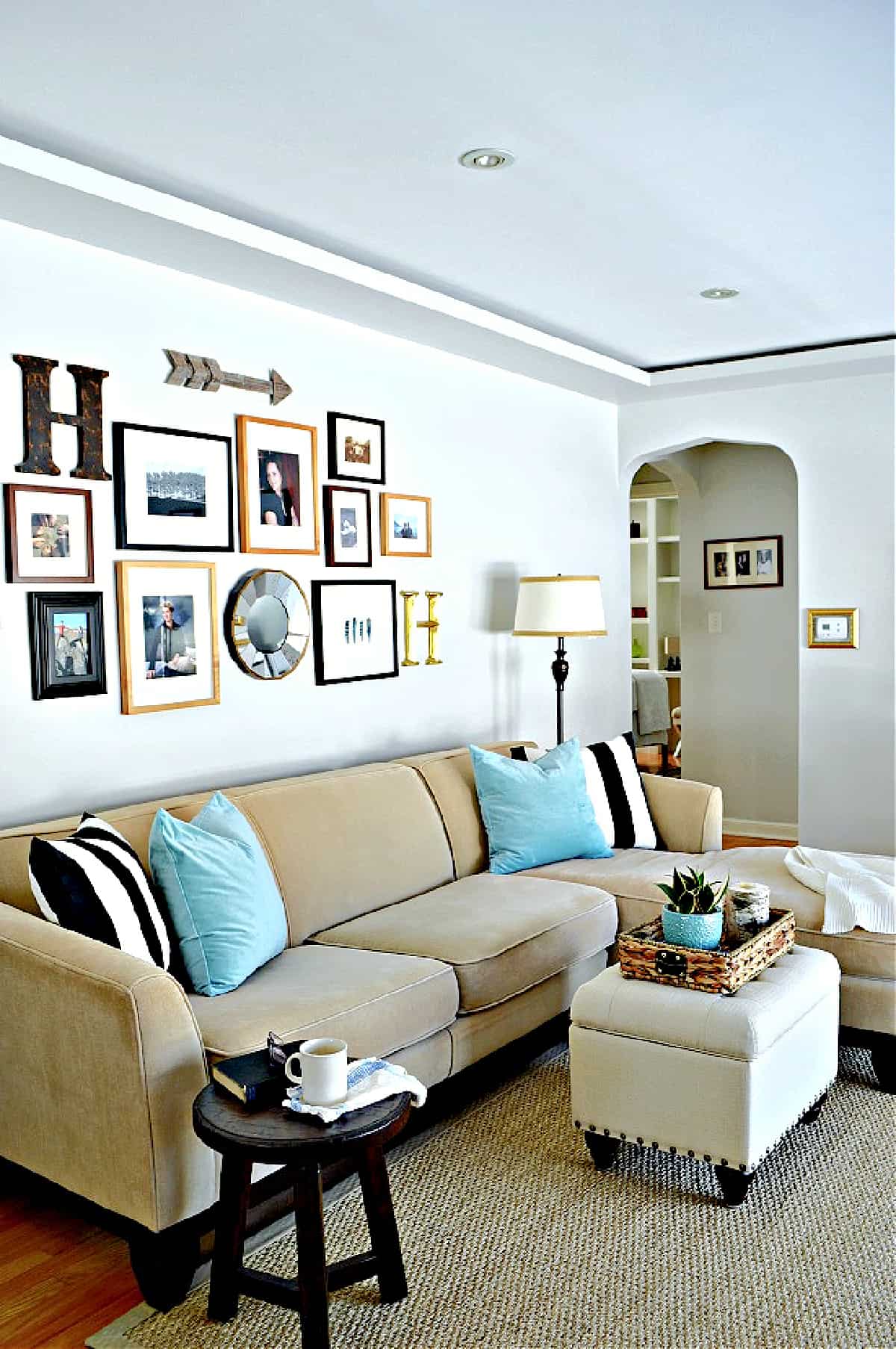
4. Wall Treatments
Another effective way to differentiate spaces is by utilizing distinct wall treatments or colors.
This can work especially well with a small room where furniture is limited. Paint one wall with
a bold color or use wallpaper that complements your overall style for an eye-catching focal
point that separates the different zones of your room.
You can use artwork this way too by selecting contrasting pieces to highlight the separation
between living and dining areas.
5. Storage
Integrate shelving units into your design scheme as both functional storage solutions and
dividers simultaneously.
These units can serve as elegant partitions between different areas
while providing ample display opportunities for books, decorative items, or dinnerware.
Considering Flow
Figuring out how to create a good transition between separate spaces can make all the
difference in terms of functionality and aesthetics.
To ensure a seamless flow be sure to incorporate some features that connect your different zones.
- If you’re anchoring your areas with rugs, then choose individual styles that have
some similarities with each other, like shape, color or pattern. - When choosing distinctive light fixtures for your spaces, consider different types of
the same design. - You will also want to give some thought to the traffic flow through your room. While
you may wish to break up the open-plan space to demarcate the living zone from the
dining zone, ensure you can move through and between the two areas without
obstruction for harmonious flow. - If you’re marking out your living area from your dining area using color, choose
different shades that complement each other for a cohesive overall impression.
Decorating a Small Living Room-Dining Room Combo
Your small multi-use room doesn’t have to feel cramped or crowded. By using our design
tips to maximize your storage and make the most of the space you’ve got, you can make
decorating a small living room dining room combo look easy.
Select Appropriate Furniture
Investing in multi-functional furniture pieces that serve more than one purpose will pay
dividends in managing your compact space. Consider an ottoman with hidden storage, a
shelving unit that will hold both books and tableware, or a coffee table that doubles as a
desk.
Speaking of furniture selection, be mindful of scale. Oversized furniture can overwhelm tiny
rooms while undersized pieces might make them feel empty and incomplete.
Opt for furnishings that are appropriately sized to fit comfortably without dominating the entire
space.
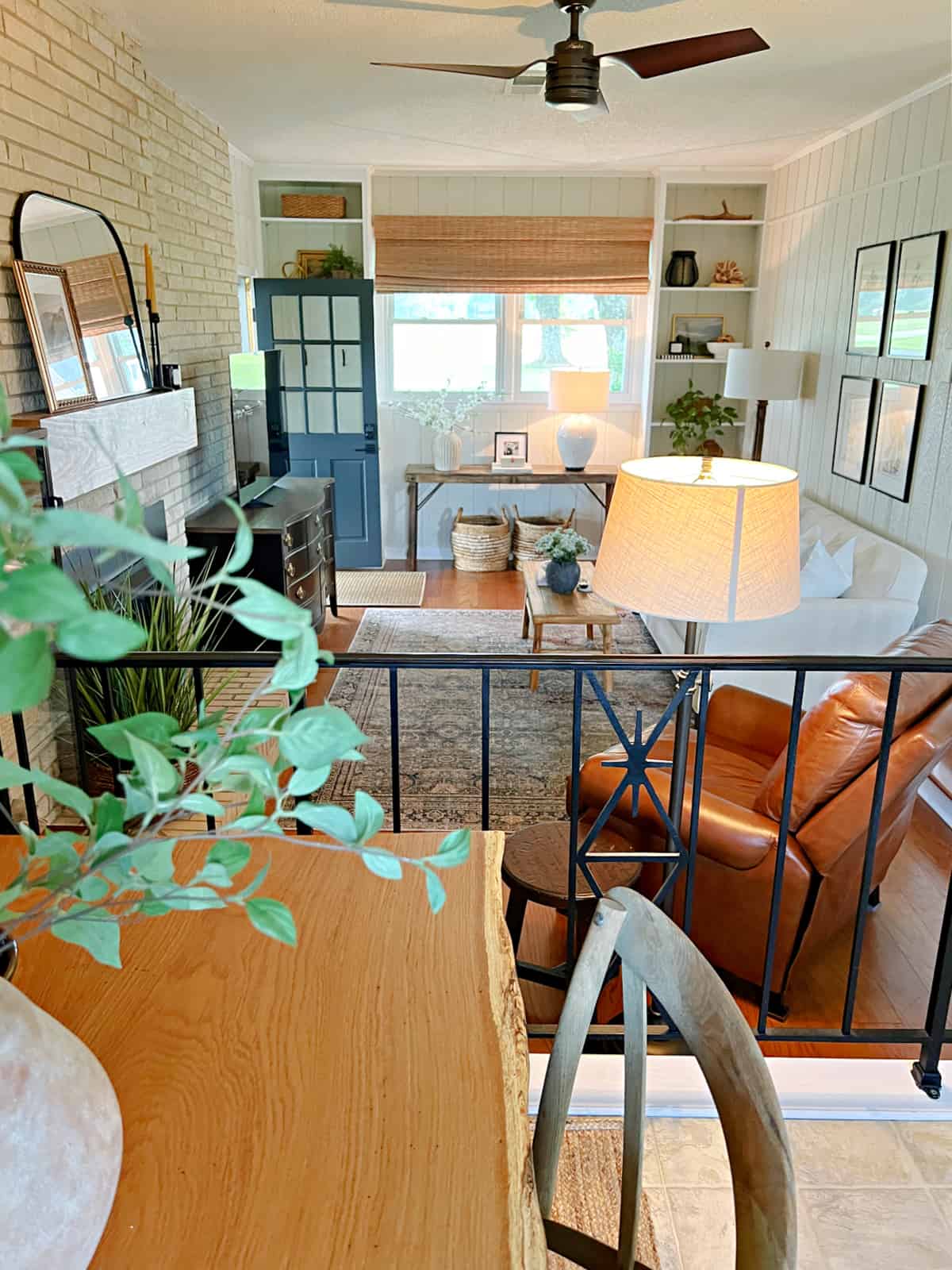
Utilize Vertical Space
If you’re dealing with limited square footage, don’t forget to make the most of your vertical
space.
Floating shelves on walls are a great solution that offers both convenient storage and design
detail—and they don’t take up valuable floor space.
A wall-mounted mirror can provide added value to your living-dining room combo by
delineating one of your areas while at the same time maximizing light and making your room look bigger.
Pendant lighting hanging from the ceiling is both elegant and practical for small rooms
without adding any clutter.
Consider Color
When it comes to color choices, lighter hues tend to create an illusion of more space by
reflecting light and making walls appear farther away. To maximize the feeling of airiness in
your room, choose shades that reflect light.
However, don’t shy away from using color to make a signature statement just because your
multi-use room is a little compact. Using a touch of bright or dark paint color can provide a
sophisticated coziness when chosen well.
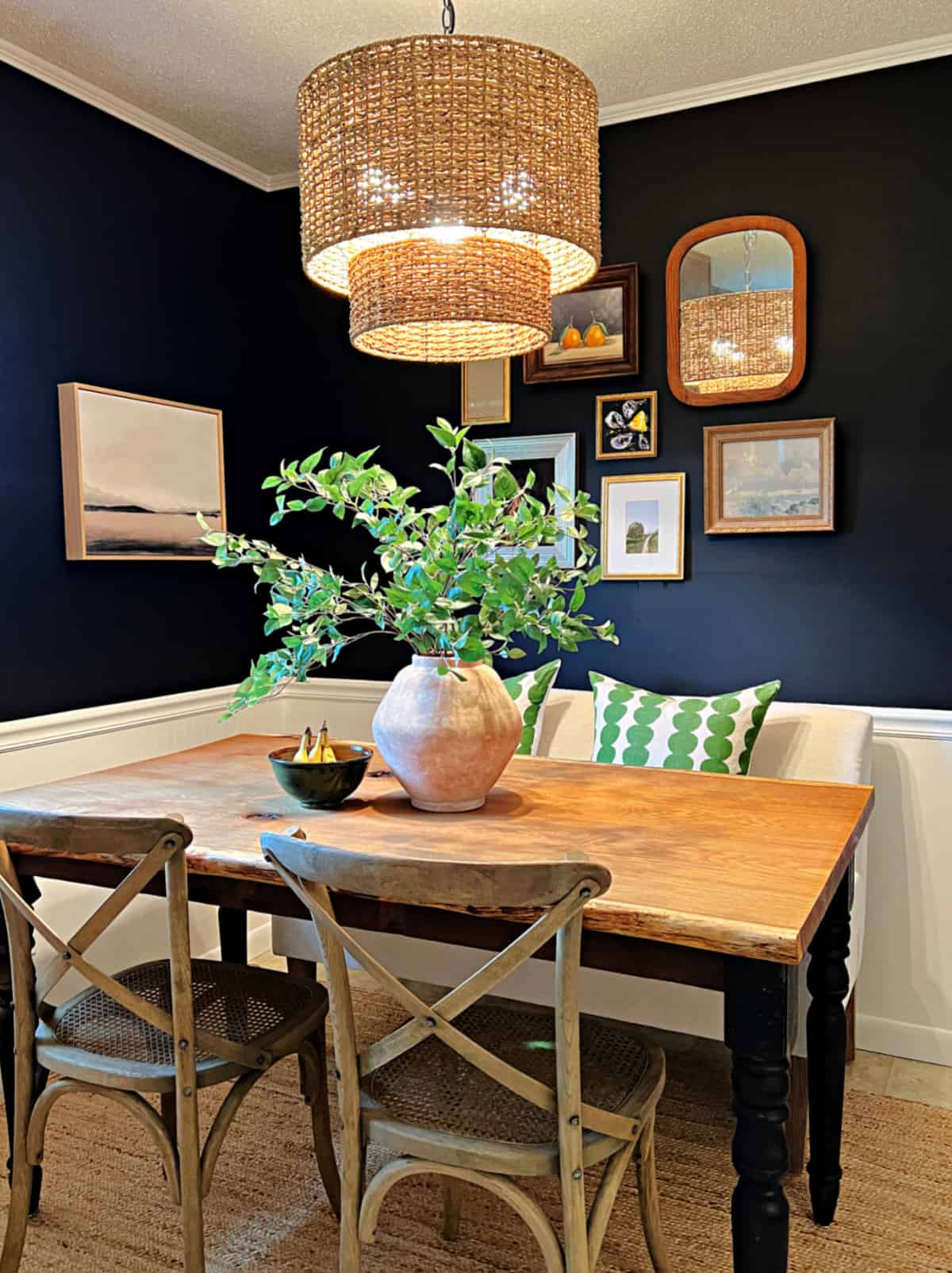
Decorating a small living room dining room combo just requires a little ingenuity and
planning.
By maximizing the available space, incorporating versatile furniture pieces and
adding a dash of your own creativity, you can transform your compact space into a stylish and functional haven for both relaxation and entertaining.

